Joselito Calios, Education Program Supervisor, DepEd Division Office, Pasig City
The pandemic has revealed the many frailties of the system of education that we used to know and the experiences that we have encountered. Our struggle to implement different learning modalities in sustaining the education of children in the middle of a pandemic should point us in the direction of creating a school system that will be resilient to any interruption.
Schools of the future will use hybrid classroom modalities. Instructional technologies will be described to make instruction more holistic. Essential learning competencies will make up a curriculum that is more relevant and compact in size, thereby decongesting daily instruction of lessons. With all these education reforms, teacher proficiencies must be upgraded because teachers are the front liners in implementing all these policies and programs.
And so as I said earlier, teacher development programs must evolve with the changing education environment. Its design and implementation must adhere to sustainability of teacher competencies. These means learning and development activities must be made for long-term goals and not just for the sake of doing temporary training every time a pedagogical height comes to mind.
So what TPD programs can be offered to teachers to be able to cope with post-COVID classroom?
Effective professional development for teachers should be content-based so that it should incorporate active learning, support collaboration, use models of collaborative practice, provide coaching and expert support, and offer feedback and reflection of a sustained duration.
We go back to the focus group discussion that I conducted with some of our teachers in our school’s division. I asked them to select from 11 different means that they considered to be the most effective in building teacher proficiency, especially when regular classes come back any time sooner.
Surprisingly, the top choices were team building, learning action cell or the quality circle, and teaching demonstration. When asked why most preferred joining a team building activity, they were quick to explain that mental health of all personnel should be recharged after having been drained by the many rigorous tasks that the previous school year demanded from them. They also felt the need to rebuild and strengthen their sense of teamwork which was lost due to the no-contact work policy also caused by the pandemic. They believed that collaboration between and among teachers is a strong force in building professional competencies and so teachers seem to learn more effectively when they collaborate. This component of proficiency development can be promoted to team building activities.
The learning action cell or quality circles is another teacher professional development feature that can bring more help to teachers in upgrading their instructional skills to a higher level. It has the qualities of a learning program that is practical and sustainable because they are easy to manage and are cost-efficient.
Time and timing of TPD are relevant to teacher professional development. Scheduled capacity building activity should be properly calendared so that they do not interfere with other similarly significant TPDs or endeavors for student development, school management, and other programs of the Department of Education.
Sustainability saves on financial and logistical resources for the organization. The Department of Education may not hold too many trainings and workshops to reinforce proficiencies of teachers. When TPDs are consistently followed through, the results will be far-reaching and goal-meeting even when fewer programs and activities are undertaken.
Finally, the teacher and the learner should be at the heart of the policies and decisions we make for the program implementation plan of the organization. And on this final note, I quote the author Laura Lipton:
“Professional development is a collective resource, not a personal prerogative. Peer engagement forges powerful links between teacher learning and student growth.”




